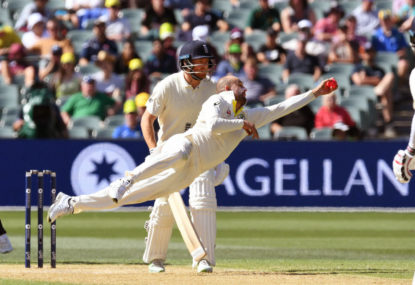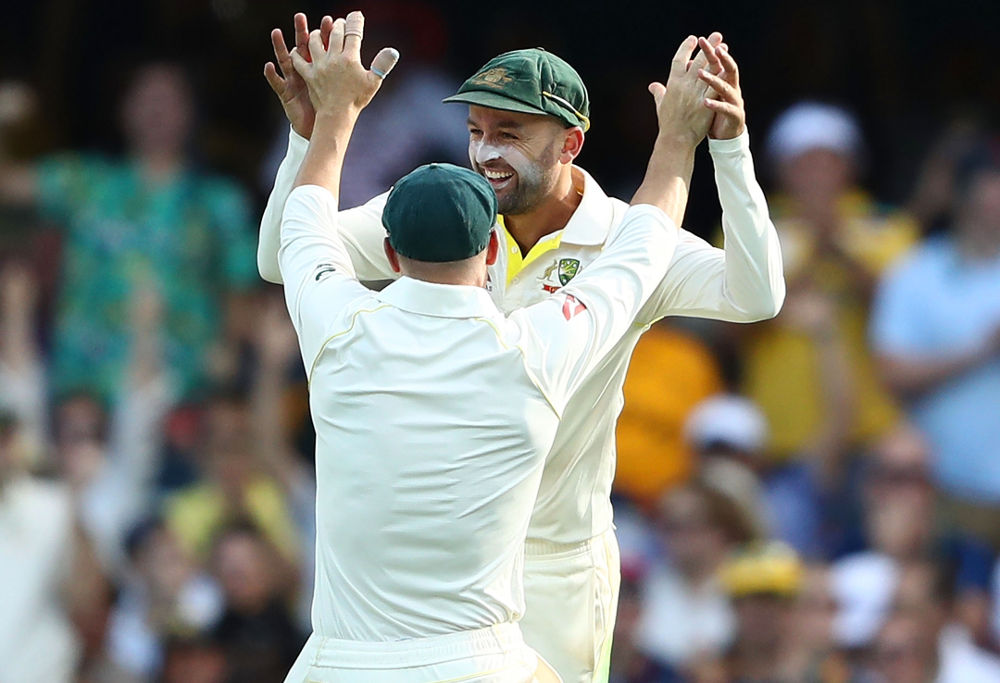RIP, David Lord: Australian sports journalism icon was 'always thoughtful and thought-provoking'
David Lord has been remembered as an icon of Australian sports journalism following his death, aged 84. The renowned writer and broadcaster was an…

Australia wrapped up the final Ashes Test by an innings and 123 runs to formally win back the urn in a 4-0 series win.
It was a very big moment in the career of Steven Smith to win an Ashes as it always will be for an Australian captain. Smith was rightly named man of the series for his 687 runs at a jaw-dropping average of 137.
Throughout the five Tests England had their foot in the door, requiring a group effort from Australia in response. These are the moments Australia launched their fightbacks to ensure victory.
1. James Vince is run out
England had a steady start to their campaign in the first Test at Gabba, where James Vince was going strong – in fact he stitched a 100-run partnership with Mark Stoneman and was looking good to get a big one with captain Joe Root as well.
Unfortunately for Vince a one-handed catch from Nathan Lyon ended his 83 runs knock. After that England collapsed for 302, with Smith going on to say how the run out of Vince was the moment that turned the match in Australia’s favour.
A century in the Ashes would have done world of good for Vince going into later matches, as we saw Dawid Malan and the Marsh brothers grow in confidence after getting to their respective hundreds.

(Ryan Pierse/Getty Images)
2. Captain Smith leads by example
The Australian captain made 687 runs at an average of 137 with three centuries whereas English captain Joe Root could muster only five half-centuries, three of which came after the series had already been lost.
He couldn’t score big like Smith did, and nor was he as effective. Smith must have put double pressure on him not just as a batsman but also as a leader of this England line-up.
3. The spin effect
Nathan Lyon talked a lot in the pre-series conference, but he walked the talk. He took 21 wickets in the series and, more importantly, bowled long spells, allowing the Australian fast bowlers a much-needed break. In fact England assistant coach Paul Farbrace went on to say his contribution to the Australian victory had been as good as Smith’s.
His opposite number, Moeen Ali, looked a pale shadow of himself and could manage only five wickets, hardly troubling batsmen even when the ball got older. Even with the bat Ali hardly contributed in crucial times, with Pat Cummins exposing his shortcomings against short stuff and Lyon getting Ali out seven times.

(AP Photo/Aijaz Rahi)
4. A lack of support in the bowling department
James Anderson stood out for a 35-year-old bowler in Australia. Despite lacking support from Stuart Broad or Moeen Ali from the other end, he didn’t let his shoulder drop down like in the previous tour of 2013-14.
His stats for the series include 17 wickets at an average of 27.53. His first five-wicket haul of 5/43 to bowl out Australia cheaply in the second Test gave Australia some nightmares after not enforcing the follow-on, but thanks to another batting collapse England lost out on the chance to square the series in Adelaide.
5. No big English run totals
His 244 not out at the MCG aside, Alastair Cook hardly made a big contribution. Joe Root couldn’t get a single hundred, while Malan lacked support from the middle and lower order, which saw England fold out for below-par scores in all the Tests.
England simply couldn’t get the big 500 or 600-run scores Australia managed to challenge and put pressure on the home side. Bairstow batted too low down the order to make any big impact, and Root probably should have promoted himself up the order to number three over young James Vince, who could have played at number six with Malan and Bairstow following at four and five. Ben Foakes could have taken up the wicketkeeping duties.
Ben Stokes missing no doubt affected England’s combinations, but throughout the series they showed enough spark, putting Australia under serious pressure for some time. It just wasn’t for long enough.